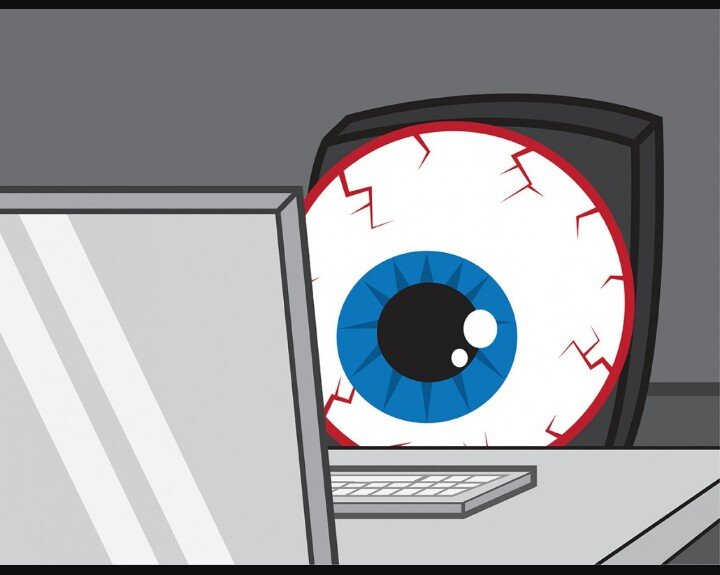.jpeg)
Computer Vision Syndrome (CVS) is a condition resulting from focusing the eyes on a computer display for protracted, uninterrupted periods of time. Some symptoms of CVS includes headaches, blurred vision, neck pain, redness of the eyes, fatigue, eye strains, dry eyes, irritated eyes, double vision and difficulty refocusing the eyes. These symptoms can be further aggravated by improper lighting conditions, air moving past the eyes e.g overhead vents, direct air from a fan or air condition and refractive errors. CVS affects about 90% of the people who spend 3hours or more a day on the computer.
With so many of us using computer at work, computer eye strain has become a major job related complaint. Studies show that eye strain and other bothersome visual symptoms occur in about 90% of computer workers.
These problems can range from physical fatigue, decreased productivity and increased number of work errors to minor annoyances like eye twitching.
In most cases, symptoms occurs because the visual demands of the tasks exceeded the visual abilities of the individual to comfortably perform the task, hence the need for regular eye checks by computer users. Your eye care professional will examine you and give you appropriate eye glass or medications to enhance your visual abilities for comfortable computer work.

Working on a computer is more challenging to the eye than reading a book or a piece of paper because a computer screen also adds the element of screen contrast, flicker and glare.
CVS is more likely to occur if you already have an eye problem such as farsightedness, nearsightedness, or astigmatism or if you need glasses but don't wear them or wear the wrong prescription for computer use.
Working on a computer gets even more difficult as you get older that is because the lens of your eye becomes less flexible. The ability of focus on near and far object starts to diminish after about age 40 years.
The level of discomfort increases with the amount of computer use. Some of the visual symptoms by computer users are only temporary and will decline after stopping computer work. However some individuals may experience continued reduced visual abilities such as blurred distance vision and headaches even after stopping work on a computer. If nothing is done to address the cause of the problem, the symptoms will continue to reoccur and perhaps worsen with future computer use.
Many people try to compensate for uncomfortable vision symptoms by leaning forward or by tipping their head to look through the bottom portion of their glasses. These actions can result in sore neck, sore shoulder and sore back.
CVS can be diagnosed through a comprehensive eye examination. Testing with special emphasis on individual visual requirement at the computer will provide needed information to determine treatment options.
THERAPY
Dry eye is a major symptom that is targeted in the therapy of CVS. Asthenopic symptoms (Headaches, Pains, blurred vision, Double vision) in the eye are responsible for much of the morbidity in the CVS. Proper eye and ocular muscle care is recommended to relieve the associated eye strain. Correct pair of glasses and special coated lenses form a major component in the overall management of CVS.
.jpeg)
10 EASY STEPS YOU CAN TAKE TO REDUCE YOUR RISK OF COMPUTER EYE STRAIN AND OTHER COMMON SYMPTOMS OF CVS
- Get a comprehensive eye exam.
- Use proper lighting.
- Minimize glare.
- Upgrade your display.
- Adjust your computer display settings.
- Blink more often.
- Exercise your eyes.
- Take frequent breaks.
- Modify your workstation.
- Consider computer eyewear.
Bottom Line:
On a computer scree , Black text on a white background is best.
Thanks for reading. If you find this educative please comment, upvote and reesteem.
I am me @brightfame
About how long is the optimal time to focus on a screen?